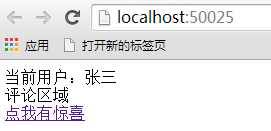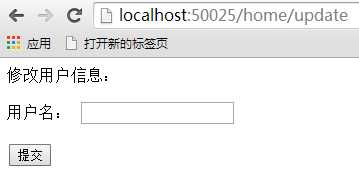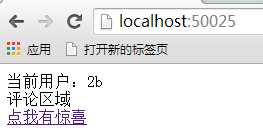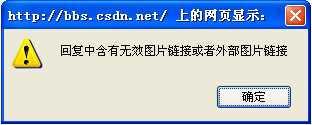标签:保存 ace format 方法 name false guid 判断 amp
1. 什么是跨站请求伪造(CSRF)
CSRF(Cross-site request forgery跨站请求伪造,也被称为“One Click Attack”或者Session Riding,通常缩写为CSRF或者XSRF,是一种对网站的恶意利用。尽管听起来像跨站脚本(XSS),但它与XSS非常不同,并且攻击方式几乎相左。XSS利用站点内的信任用户,而CSRF则通过伪装来自受信任用户的请求来利用受信任的网站。与XSS攻击相比,CSRF攻击往往不大流行(因此对其进行防范的资源也相当稀少)和难以防范,所以被认为比XSS更具危险性。
以上是来自百度百科的概念。下面各自举个简单的例子说明:
XSS:假设没有预防XSS,我在文章评论区域输入:<script>while(1)alert("呵呵")</script> 并且成功提交。那么下次进来这个页面进来,就会不断弹出对话框,导致该页面无法被正常浏览;对此我们在输出内容时,如果该内容是用户输入的,那么就应该进行Html Encode,如上面的脚本就会以普通文本的形式显示出来。不仅如此,攻击脚本还可以读取用户cookie信息,做任何脚本能做的事情。
CSRF:与XSS不同,CSRF利用的当前信任用户,让用户不知不觉的“自己提交”数据。例如用户 B 在用户 A 的文章评论区域上传一张图片,如:
[img]http://images2015.cnblogs.com/blog/798800/201512/798800-20151230205214839-1087717627.jpg[/img]
然后把它改成:
[img]http://Another/Forgery.html[/img]
这是一张无效的图片,并且来自于另一个站点。在 Forgery.html 中,伪造者创建一个表单,action指向要攻击的页面,当window.onload 执行时自动提交表单。
那么用户 A 在访问该页面时,就会发起请求到Another/Forgery.html。由于Web的身份验证信息通常会保存在浏览器cookie中,而cookie每次都会随请求提交到服务器,所以这个请求会把cookie 和 Forgery.html 的表单信息一起提交到服务器。服务器对Cookie进行相关验证,并且认为这是一个正常的请求,执行相关操作。
2. 模拟一次攻击
按照上面的思路,接下来我们模拟一次攻击。新建一个mvc项目,主要有两个页面,一个页面用于显示用户姓名和评论,另一个页面用于用户自己修改姓名。只是为了演示,这里我们固定一个用户:张三。如:
|
1
2
3
4
5
6
7
8
9
10
11
12
|
public class CurrentUser{ private static CurrentUser currentUser = new CurrentUser(){Name="张三"}; public string Name{get;set;} public static CurrentUser Current { get { return currentUser; } }} |
显示页面为:

本站点的另一个页面用于修改用户姓名:
|
1
2
3
4
5
6
7
8
9
10
11
12
|
<div> 修改用户信息:</div><form action="/home/update" method="post"> <p> <label>用户名:</label> <input name="name" /> </p> <p> <input type="submit" /> </p></form> |

对应Action为Update,为了提高安全性,我们给它标记一个[HttpPost]特性(实际情况这里会进行身份验证,然后根据用户id去修改信息)。如:
|
1
2
3
4
5
6
|
[HttpPost]public ActionResult Update(stringname){ CurrentUser.Current.Name = name; returnRedirectToAction("Index");} |
可以看到上面的评论区域有一个链接,来自另一个站点,它的代码很简单,与我们的修改页面类似,如下:
|
1
2
3
4
5
6
7
8
9
10
11
12
|
<body> <div> <form id="form" action="http://localhost:50025/home/update" method="post"> <input type="hidden" name="name" value="2b" /> </form> </div></body><script type="text/javascript"> window.onload = function () { document.getElementById("form").submit(); }</script> |
可以看到,该页面表达的action指向了前面的站点的修改页面,并且在页面load完后,就会自动提交。当张三点击这个链接后,会发生什么呢?如下:

3. 如何防止
3.1 尽早防范
永远不要相信用户提交的数据。通常我们会在前台和后台对用户的输入进行验证,确保数据的正确性和安全性。以上面的例子,如果用户上传一张图片,然后修改成.html的格式,那么应该不让它保存。我们可以看博客园的例子,如果这样做,可以保存,但显示出来就是普通文本的格式,这样页面加载时就不会对这个url发起请求。再看csdn,则会弹出提示非法输入。
cnblogs: 
csdn: 
当然,这样只是第一道屏障。很多网站也可能像上面可以输入外部链接,如果用户去点击,依然可能被攻击。所以我们还需要进一步防范。
3.2 MVC 的做法
前面我们模拟了CSRF的过程,接下看MVC里如何应对这种情况。
ValidateAntiForgeryAttribute特性
这是一个继承了FilterAttribute 和 实现了 IActionFilter 的标记特性,它可以应用在Controller或者Action上面。我们知道实现IActionFilter的 Filter会在 Action执行前进行相关处理,具体逻辑在 IActionFilter接口的 OnAuthorization 方法中。MVC 就是在这个方法中进行验证的。具体是如何验证的呢?
AntiForgeryToken方法
ValidateAntiForgery特性表示操作需要验证,我们还需要使用HtmlHelper的 AntiForgeryToken方法,这是一个实例方法。具体是在View的表单里调用该方法,该方法会生成一个name为__RequestVerificationToken的 input hidden标签,值就是防伪令牌。除此之外,还会生成一个同样名称并且标记为HttpOnly的cookie,值也是通过加密生成的防伪令牌。ValidateAntiForgery特性的OnAuthorization方法就是根据这两个进行验证的。具体是:
1. 用户请求该页面,AntiForgeryToken方法会生成一个input hidden 和 cookie,值都是经过加密处理的Token。
2. 用户提交请求,如果Action(Controller)标记了 ValidateAntiForgery特性,则进行验证。
2.1 如果表单没有一个name为 __RequestVerificationToken的元素,则抛出HttpAntiForgeryException。
2.2 如果没有一个name为__RequestVerificationToken的cookie,则抛出HttpAntiForgeryException。
2.3 解析input 和 cookie 的值,判断是否匹配(包括用户名、时间等的比较),不匹配则抛出HttpAntiForgeryException。
3. 接收到异常,显示错误页或抛出黄页。
至于 input 的值 和 cookie 的生成,mvc内部会根据当前用户名,时间以及集合 MachineKey 等去加密生成,确保不会轻易被猜出。有兴趣的朋友可以通过源码了解详细过程。
按照上面的做法,我们给Update加上一个[ValidateAntiForgery]特性,并且在表单调用HtmlHelper的AntiForgeryToken方法。此时如果用户点击链接,一样访问了Forgery.html,并且自动提交表单,cookie还是一样会提交,但伪造页面无法知道input hidden 的值,所以无法通过验证。
3.3 WebForm 的做法
WebForm 没有 AntiForgeryToken方法 可以直接使用,不过知道MVC的实现过程后,我们也可以自己实现一套。
在页面表单,像mvc一样,我们也输出一个名称为:_RequestVerificationToken 的 input hidden 标签,值为序列化后的Token,具体是调用 HttpRespose 的扩展方法AntiForgeryToken。AntiForgeryToken方法不仅会输入input hidden,还会将Guid存储在Context.Item,这是一个在一次请求内各个时期可以使用的集合,在页面周期完成后,我们判断是否有这个标记,如果有,还需要将它写入到Cookie当中。
表单:
|
1
2
3
4
5
6
7
|
<form id="Form1" action="UpdateAntiCsrf.aspx" method="post" runat="server"> <div> <%=Response.AntiForgeryToken() %> <input type="text" name="name"/> <input type="submit"/> </div></form> |
AntiForgeryToken扩展方法:
|
1
2
3
4
5
6
7
8
9
10
11
12
13
14
15
|
public static classHttpResposeExtentions{ public static stringAntiForgeryToken(this HttpResponse response) { HttpContext context = HttpContext.Current; if (context == null) { throw newInvalidOperationException("无效请求!"); } Guid guid = Guid.NewGuid(); context.Items["_RequestVerificationToken"] = guid; ObjectStateFormatter formatter = newObjectStateFormatter(); return string.Format("<input type=‘hidden‘ name=‘_RequestVerificationToken‘ value={0} />", formatter.Serialize(guid)); }} |
对于验证Token,和将GUID写入到Cookie是通过一个AntiCsrfModule完成的,它主要拦截页面执行前和执行后两个事件。页面执行后完成上面是否需要将GUID写入Cookie的判断,而页面执行前则判断是否需要验证,以及验证结果,一旦不匹配,就抛出异常。代码如下:
|
1
2
3
4
5
6
7
8
9
10
11
12
13
14
15
16
17
18
19
20
21
22
23
24
25
26
27
28
29
30
31
32
33
34
35
36
37
38
39
40
41
42
43
44
45
46
47
48
49
50
51
52
53
54
|
public class AntiCsrfModule : IHttpModule{ public void Dispose () { } public void Init(HttpApplication app) { app.PreRequestHandlerExecute += newEventHandler(app_PreRequestHandlerExecute); app.PostRequestHandlerExecute += newEventHandler(app_PostRequestHandlerExecute); } voidapp_PreRequestHandlerExecute(objectsender, EventArgs e) { HttpContext context = ((HttpApplication)sender).Context; HttpRequest request = context.Request; IHttpHandler handler = context.Handler; if(handler.GetType().IsDefined(typeof(ValidationAntiForgeryAttribute),true)) { if(request.HttpMethod.Equals("POST", StringComparison.CurrentCultureIgnoreCase)) { HttpCookie cookie = request.Cookies["_RequestVerificationToken"]; if (cookie == null) { throw newInvalidOperationException("无效请求!"); } string value = request.Form["_RequestVerificationToken"]; if(string.IsNullOrEmpty(value)) { throw newInvalidOperationException("无效请求!"); } ObjectStateFormatter formatter = newObjectStateFormatter(); Guid? guid = formatter.Deserialize(value) asGuid?; if(guid.HasValue && guid.Value.ToString() == cookie.Value) { return; } throw newInvalidOperationException("无效请求!"); } } } voidapp_PostRequestHandlerExecute(objectsender, EventArgs e) { HttpContext context = ((HttpApplication)sender).Context; Guid? guid = context.Items["_RequestVerificationToken"] as Guid?; if (guid.HasValue) { HttpCookie cookie = newHttpCookie("_RequestVerificationToken", guid.Value.ToString()); cookie.HttpOnly =false; context.Response.Cookies.Add(cookie); } }} |
对于需要验证的页面,通过一个ValidateAntiForgeryAttribute特性标记,如下:
|
1
2
3
|
public classValidateAntiForgeryAttribute : Attribute{} |
同样,我们像前面一样模拟一次攻击。结果如我们所想,会抛出黄页。

3.4 Ajax 方式
上面我们都是通过Post 表单的形式提交数据,如果是以ajax提交的呢?我们可以在后台判断请求是否是Ajax请求,如果不是则不允许操作。因为js受同源策略限制,另一个域在没有被授权的情况下,脚本是无法和本域进行通信的。也就是Another/Forgery.html可以以post的形式提交数据到我们后台,但没办法以ajax的形式提交,也没办法调用我们页面的方法或者访问dom元素。
4. 博客园的实现
例子就在身边。我们看到博客园【设置基本资料】模块,查看源码就会发现这里用用到了这个技术。
表单:

Cookie:

标签:保存 ace format 方法 name false guid 判断 amp
原文地址:http://www.cnblogs.com/tester-l/p/6045437.html